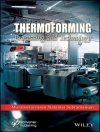This first book to illuminate this important aspect of chemical synthesis improves the lifetime of catalysts, thus reducing material and saving energy, costs and waste.
The international panel of expert authors describes the studies that have been conducted concerning the way homogeneous catalysts decompose, and the differences between homogeneous and heterogeneous catalysts.
The result is a ready reference for organic, catalytic, polymer and complex chemists, as well as those working in industry and with/on organometallics.
İçerik tablosu
ELEMENTARY STEPS
Introduction
Metal Deposition
Ligand Decomposition by Oxidation
Phosphines
Phosphites
Imines and Pyridines
Carbenes
Reactions of Metal-Carbon and Metal-Hydride Bonds
Reactions Blocking the Active Sites
EARLY TRANSITION METAL CATALYSTS FOR OLEFIN POLYMERIZATION
Ziegler-Natta Catalysts
Metallocenes
Other Single-Center Catalysts
Vanadium-Based Catalysts
Chromium-Based Catalysts
Conclusions
LATE TRANSITION METAL CATALYSTS FOR OLEFIN POLYMERIZATION
Nickel- and Palladium-Based Catalysts
Iron- and Cobalt-Based Catalysts
Conclusions
EFFECTS OF IMMOBILIZATION OF CATALYSTS FOR OLEFIN POLYMERIZATION
Introduction
Metallocenes and Related Complexes
Other Titanium and Zirconium Complexes
Vanadium Complexes
Chromium Complexes
Nickel Complexes
Iron Complexes
Conclusions
DORMANT SPECIES IN TRANSITION METAL-CATALYZED OLEFIN POLYMERIZATION
Introduction
Ziegler-Natta Catalysts
Metallocenes and Related Early Transition Metal Catalysts
Late Transition Metal Catalysts
Reversible Chain Transfer in Olefin Polymerization
Conclusions
TRANSITION METAL CATALYZED OLEFIN OLIGOMERIZATION
Introduction
Zirconium Catalysts
Titanium Catalysts
Tantalum Catalysts
Chromium Catalysts
Nickel Catalysts
Iron Catalysts
Tandem Catalysis Involving Oligomerization and Polymerization
Conclusions
ASYMMETRIC HYDROGENATION
Introduction
Incubation by Dienes in Rhodium Diene Precursors
Inhibition by Substrates, Solvents, Polar Additives, and Impurities
Inhibition by Formation of Bridged Species
Inhibition by Ligand Decomposition
Inhibition by the Product
Inhibition by Metal Formation; Heterogeneous Catalysis by Metals
Selective Activation and Deactivation of Enantiomeric Catalysts
Conclusions
CARBONYLATION REACTIONS
Introduction
Cobalt-Catalyzed Hydroformylation
Rhodium-Catalyzed Hydroformylation
Palladium-Catalyzed Alkene-CO Reactions
Methanol Carbonylation
Conclusions
METAL-CATALYZED CROSS-COUPLING REACTIONS
Introduction: A Few Historic Notes
On the Mechanism of Initiation and Precursors
Transmetallation
Reductive Elimination
Phosphine Decomposition
Metal Impurities
Metal Nanoparticles and Supported Metal Catalysts
Conclusions
ALKENE METATHESIS
Introduction
Molybdenum and Tungsten Catalysts
Rhenium Catalysts
Ruthenium Catalysts
Conclusions
Yazar hakkında
Piet van Leeuwen is group leader in the Institute of Chemical Research of Catalonia, Tarragona, Spain, since 2004 and emeritus professor of homogeneous catalysis at the University of Amsterdam. Until 1994 he headed a research group at Shell Research in Amsterdam studying many aspects of homogeneous catalysis. He coauthored 300 publications, 30 patents, many book chapters, is author of the book ‘Homogeneous catalysis: Understanding the art’. In 2005 he won the Holleman Prize (for organic chemists), granted only every five years by the Royal Academy, and obtained a Marie Curie Chair of Excellence in Tarragona.
John Chadwick is employed by Lyondell Basell Industries and since 2001 has been on secondment at Eindhoven University of Technology, where he is programme coordinator for Dutch Polymer Institute (DPI) projects on polymer catalysis and immobilization. Until 1995, he was at Shell Research in Amsterdam, after which he transferred to the Lyondell Basell (at that time Montell, later Basell) research center in Ferrara, Italy, where he was involved in fundamental Ziegler-Natta catalyst R&D. His main research interests involve heterogeneous olefin polymerization catalysis, including Ziegler-Natta and immobilized single-site systems. He is author or co-author of more than 60 publications and 11 patents.












